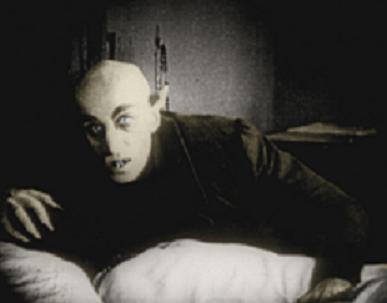
 Abraham (Bram) Stoker was born in Dublin, Ireland in 1847 and died in London in 1912. During the 1890s he became intensely interested in, and did extensive research into the Rumanian myths of the “nosferatu,” the undead. The culmination of his studies resulted in his masterpiece, the world-renowned vampire novel Dracula, which saw publication in 1897.
Abraham (Bram) Stoker was born in Dublin, Ireland in 1847 and died in London in 1912. During the 1890s he became intensely interested in, and did extensive research into the Rumanian myths of the “nosferatu,” the undead. The culmination of his studies resulted in his masterpiece, the world-renowned vampire novel Dracula, which saw publication in 1897.
While early writings of vampire myth and legend can be found in various places throughout Europe prior to Stoker’s novel, its English antecedents can be found as early as 1816. While on their famous trip through Europe in June of 1816, Mary Shelley, her husband Percy Bysshe Shelley, a young doctor by the name of John Polidori, and their friend George Gordon, Lord Byron, would find themselves holed up during a stretch of inclement weather. To pass the time, Mary suggested they each write a ghost story. Mary dreamed up the idea for Frankenstein; Polidori, as Mary would later recount, “had a terrible idea about a skull-headed lady,” Percy lost interest in the idea quickly, and Byron wrote a brief fragment of a story–about a vampire. Three years later, however, in 1819, John Polidori would publish a short story titled “The Vampyre,” with a thinly-veiled vampire protagonist named Ruthven who is obviously meant to be Lord Byron, with whom Polidori had quarreled endlessly on the group’s travels. “The Vampyre” has been credited as the first vampire story (of any substance) in the English language.
In any case, along with Polidori’s tale, Stoker’s Dracula also drew upon such earlier vampire stories as James Malcolm Rymer’s novel Varney the Vampire, or, The Feast of Blood (1845), J. Sheridan Le Fanu’s oft-reprinted Carmilla (1872), and perhaps Mary Elizabeth Braddon’s short story “Good Lady Ducayne” (1896). Stoker’s synthesis of the original myths and legends gained from his own research, as well as from the legacy of the tales mentioned above, hit a nerve with his audience, and the rest is history.

 Not the first film to be made from Stoker’s book (i.e. 1921’s silent film Nosferatu), but certainly the most famous and an acknowledged classic, is the 1931 version starring Bela Lugosi. It was this film’s popularity that led the young genius Orson Welles to bring it to radio less than a decade later with his Mercury Theater troupe. The Mercury Theater began as a live theater group, then moved to radio with the title The CBS Mercury Theater on the Air. Welles chose Dracula as the first of his hour-long dramatizations of classic tales for his CBS program. It aired on July 11, 1938. Just as the black and white 1931 film enthralls with its eerie charm — its dark, brooding atmosphere enhanced by a cold, tomb-like castle, Lugosi’s thick accent and flowing movements, and lines like the famous “Listen to them. Children of the night. What music they make,” — so too does this radio adaptation evoke images of the 1931 film thanks to Welles’ performance and understanding of the story, as evinced by his capable directorial acumen.
Not the first film to be made from Stoker’s book (i.e. 1921’s silent film Nosferatu), but certainly the most famous and an acknowledged classic, is the 1931 version starring Bela Lugosi. It was this film’s popularity that led the young genius Orson Welles to bring it to radio less than a decade later with his Mercury Theater troupe. The Mercury Theater began as a live theater group, then moved to radio with the title The CBS Mercury Theater on the Air. Welles chose Dracula as the first of his hour-long dramatizations of classic tales for his CBS program. It aired on July 11, 1938. Just as the black and white 1931 film enthralls with its eerie charm — its dark, brooding atmosphere enhanced by a cold, tomb-like castle, Lugosi’s thick accent and flowing movements, and lines like the famous “Listen to them. Children of the night. What music they make,” — so too does this radio adaptation evoke images of the 1931 film thanks to Welles’ performance and understanding of the story, as evinced by his capable directorial acumen.
The vampire is one of the most powerful archetypes in literature, and certainly, on some deep, primal level buried in our collective psyches, one of the most terrifying. Listen now–if you dare–to Orson Welles and his Mercury Theater on the Air, as they recreate one of the most chilling stories ever told, of the vampire known as Dracula!
Play Time: 53:41
